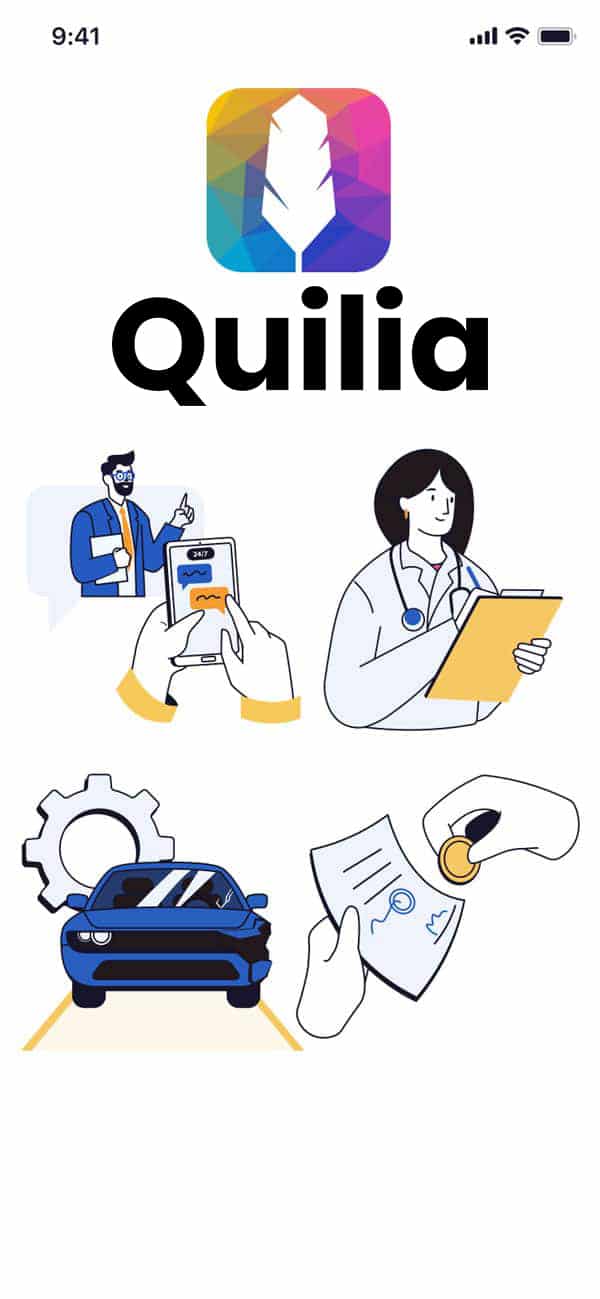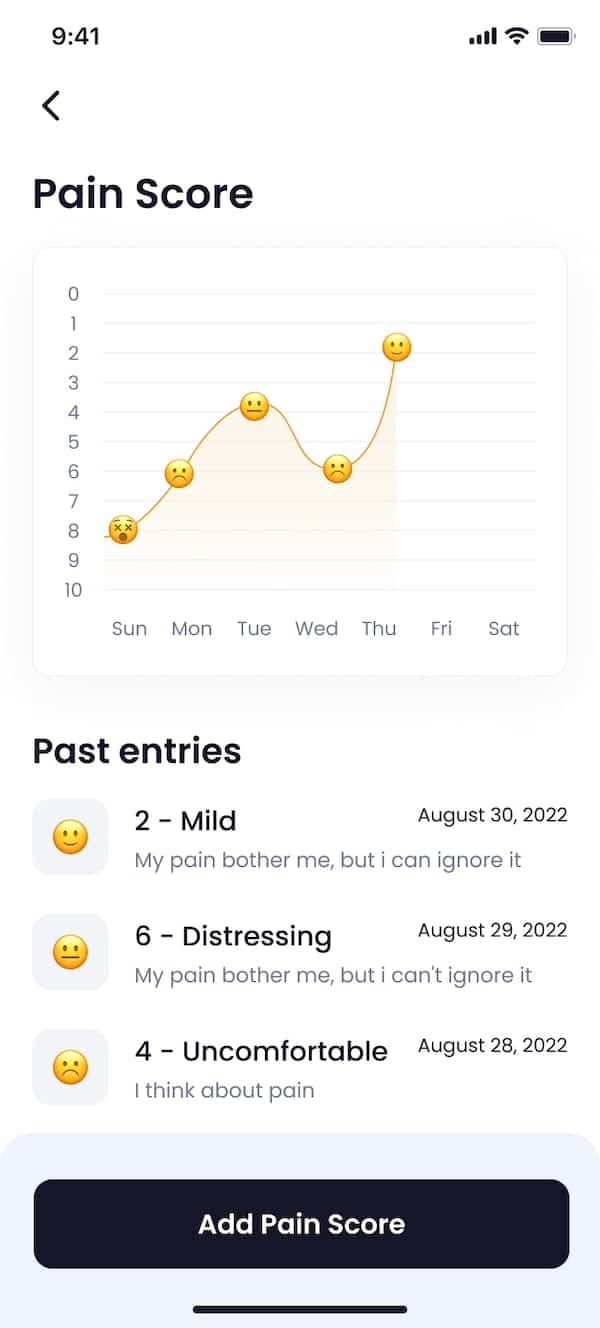Pain Score Tracking for Personal Injury Cases
Monitor client recovery and build stronger cases with accurate pain documentation.
Quilia's pain score tracking feature allows clients to record their daily pain levels, providing attorneys with valuable data to support personal injury cases. This systematic approach ensures accurate documentation and helps demonstrate the impact of injuries on clients' daily lives.
BrittanyQuilia App User
Providing information to the attorney.
Educational exercise for the client.
What is a pain score (0–10)?
Quilia uses a simple 0–10 pain scale so clients can quickly record how they feel each day. These entries create a time‑stamped timeline that complements medical notes and helps show impact on daily activities.
Want a deeper dive into how attorneys leverage this data and best practices for documenting pain? Read our comprehensive guide on pain scores.
Pain scale at a glance
We use clear labels and simple emojis to make it easier for clients to choose the number that best matches how they feel.
This guide is for general reference only and is not medical advice.

